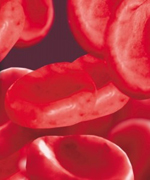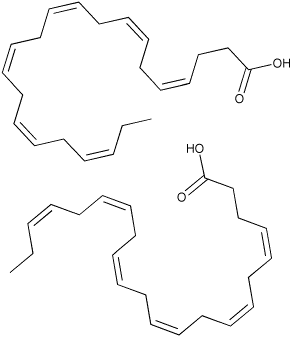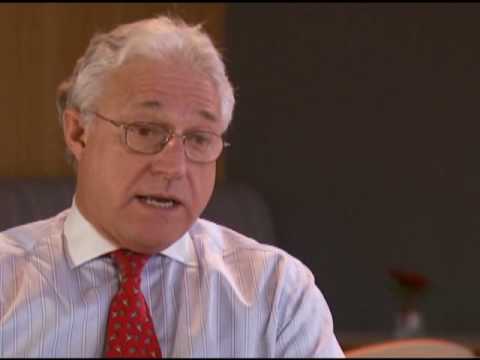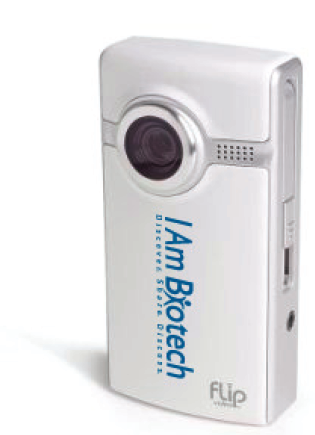After Amgen tried to get a judgment against Hoffman-La Roche that Roche’s product, MIRCERA®, would infringe Amgen’s five patents if imported into the United States, Roche tried to get the patents invalidated. Amgen v. Hoffman-La Roche (09-1020, -1096).

At the district court, the court entered judgment that the ’868, ’933, ’698, and ’422 patents were infringed and not invalid, and permanently enjoined Roche from marketing MIRCERA® in the United States.
The U.S. Court of Appeals for the Federal Circuit issued a 81-page ruling that gave each side a little of what was requested but, in the end, the appeals court affirmed that Roche’s drug did infringe on some of Amgen’s patent claims.
To produce EPO, Amgen researchers led by Dr. Fu-Kuen Lin made an expression vector carrying the human EPO DNA sequence. Lin injected, or transfected, host Chinese hamster ovary (CHO) cells with the expression vector. The transfected CHO cells use the EPO DNA sequence to form a protein with the 166 amino acid sequence of EPO.
Prior to secretion of EPO from the cell, the final amino acid, or the C- terminal amino acid, of the 166 amino acid sequence is cleaved off, leaving a 165 amino acid protein. Also prior to secretion, carbohydrates are attached to certain sites on EPO by glycosylation, which results in a glycoprotein. Recombinant EPO produced in this manner can bind to the EPO receptor and stimulate erythropoiesis.
In 1986, the PTO subjected Amgen’s ’298 application to a restriction requirement, which identified claims drawn to DNA, cells, polypeptides, and pharmaceutical compositions as each directed to patentably distinct subject matter. (Ed. Note: Today, that would more likely be a 165-way restriction but that’s another issue). Amgen elected to prosecute Group II claims, which were drawn to DNA and host cells. Ultimately, the ’298 application issued.
On October 23, 1987, subsequent to the restriction requirement but before the ’008 patent issued, Amgen prosecuted the claims withdrawn from the ’298 application in continuation applications 07/113,178 and 07/113,179. Eventually, the ’933 patent eventually emerged from the ’178 application, while the ’422, ’349, ’868, and ’698 patents eventually emerged from the ’179 application.
Based on these patents, Amgen has developed two erythropoiesis-stimulating agent (ESA) drugs, EPOGEN® and Aranesp®, to treat anemia and anemia-related diseases. Roche sought to introduce its own ESA drug, MIRCERA®, which it manufactures overseas. The active ingredient of MIRCERA® is continuous erythropoietin receptor activator (CERA). CERA is formed via a chemical reaction that bonds polyethylene glycol (PEG) to recombinant EPO produced by CHO cells. Pegylation of a therapeutic protein, such as EPO, can expand the drug’s life in the body and reduce levels of toxicity, allowing for extended dosing intervals. Id. As a result, MIRCERA® has received FDA approval for once-monthly dosing to anemic patients. Id.
In this appeal, the CAFC looked at issues involving obviousness-type double patenting, anticipation, indefiniteness, and infringement relating to the ’933, ’422, ’349, ’868, and ’698 patents. The district court granted Amgen summary judgment of no obviousness-type double patenting of the asserted claims of the ’933, ’422, and ’349 patents over the claims of the ’008 patent. Section 121, entitled “Divisional applications,” provides in its third sentence:
A patent issuing on an application with respect to which a requirement for restriction under this section has been made, or on an application filed as a result of such a requirement, shall not be used as a reference either in the Patent and Trademark Office or in the courts against a divisional application or against the original application or any patent issued on either of them, if the divisional application is filed before the issuance of the patent on the other application.
The third sentence of § 121 is a safe harbor provision that protects a divisional application, the original application, or any patent issued on either of them from validity challenges based on a patent issuing on an application subjected to a restriction requirement or on an application filed as a result of a restriction requirement.
The district court concluded that the ’933, ’422, and ’349 patents were entitled to the § 121 safe harbor because they had descended from the ’178 and ’179 applications, both of which had been filed in response to a PTO-imposed restriction requirement. The court observed that “[a]fter the PTO imposed the 1986 restriction requirement,” Amgen “filed two divisional applications, the ’178 and ’179, which ultimately issued as the ’933, ’422, and ’349 patents.”
On appeal, Roche argued that § 121 cannot shield the ’933 and ’422 patents because they issued from solely continuation applications to which § 121 is inapplicable. Roche contends that § 121 applies exclusively to divisional applications and patents issuing therefrom. Roche emphasizes that the statute, entitled “Divisional applications,” requires on its face that the later patent must issue from “a divisional application” or the “original application.” Because the ’933 and ’422 patents issued from the ’178 and ’179 continuation applications, Roche contends they are not entitled to the § 121 safe harbor.
Amgen obviously rejected Roche’s version of reality and argued that the only § 121 requirement at issue is the “divisional application” requirement, and Amgen contends that the ’178 and ’179 applications meet that requirement. Amgen relied on the definition of “divisional application” in § 201.06 of the Manual of Patent Examining Procedure (“MPEP”), which provides:
A later application for an independent or distinct invention, carved out of a pending application and disclosing and claiming only subject matter disclosed in the earlier or parent application, is known as a divisional application or “division.”
The Court of Appeals felt that form should prevail over substance in this matter:
We conclude that, because the ’178 and ’179 applications were filed as continuation—rather than divisional—applications, the ’933, ’422, and ’349 patents do not receive the benefit of § 121. We reach this conclusion in light of our opinion in Pfizer, Inc. v. Teva Pharmaceuticals USA, Inc., 518 F.3d 1353 (Fed. Cir. 2008). The Pfizer decision addressed whether a patent that issued from a continuation-in-part application—rather than a divisional application—could receive the protection of the § 121 safe harbor. 518 F.3d at 1358–62. Looking first to the statute, the court observed that § 121 on its face refers to “divisional application[s].” Id. at 1360. Turning to the legislative history, the court observed that a House Report also referred specifically to “divisional application[s].” Id. Notably absent from the legislative history, in the court’s view, was a suggestion “that the safe-harbor provision was, or needed to be, directed at anything but divisional applications.” Id. at 1361. From there, the court “conclude[d] that the protection afforded by section 121 to applications (or patents issued therefrom) filed as a result of a restriction requirement is limited to divisional applications.” Id. at 1362. Accordingly, the court decided that the § 121 safe harbor did not apply to the patent before it, which issued from a continuation-in-part application.
… Amgen has not presented us with any persuasive reason as to why we should deem the ’178 and ’179 continuation applications divisional applications for purposes of § 121. Amgen does not dispute that it denominated the ’178 and ’179 applications continuations, that it checked the continuation application box on the submitted form, or that its applications met the PTO’s definition of a continuation application in MPEP § 201.07. See Amgen’s Br. 38, 42. Instead, Amgen argues that, because the ’178 and ’179 continuation applications could have been filed as divisional applications, we should treat them as such for purposes of § 121. While this argument convinced the district court to regard the ’178 and ’179 continuation applications as divisional applications, we are not likewise convinced. We decline to construe “divisional application” in § 121 to encompass Amgen’s properly filed, properly designated continuation applications.
For Amgen, it mostly cares that Roche is still blocked from importing MIRCERA considering that Amgen’s two anemia drugs, Aranesp and Epogen, brought in revenue of $4.1 billion in the U.S. for 2008, representing more than 35% of Amgen’s U.S. product sales.






